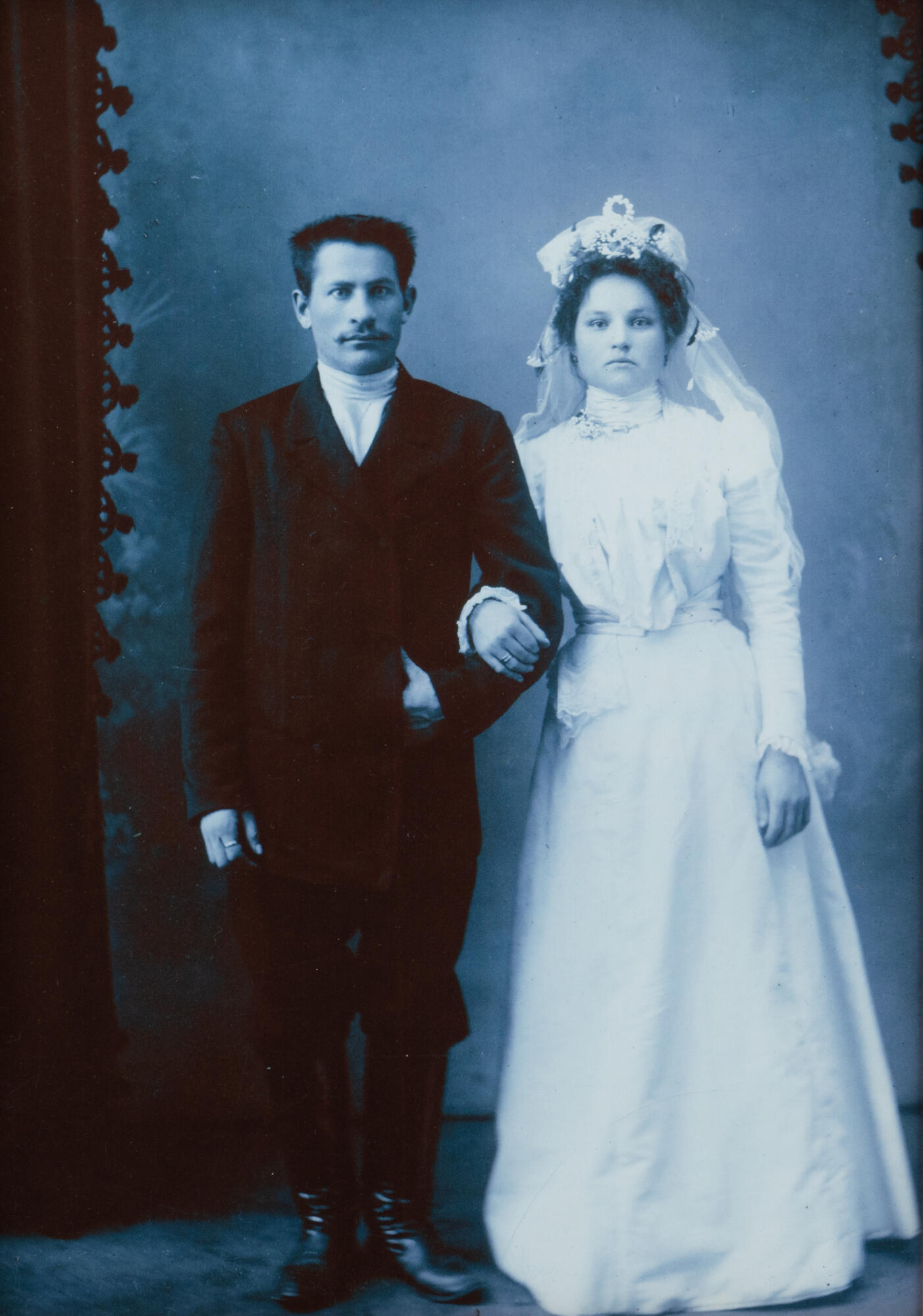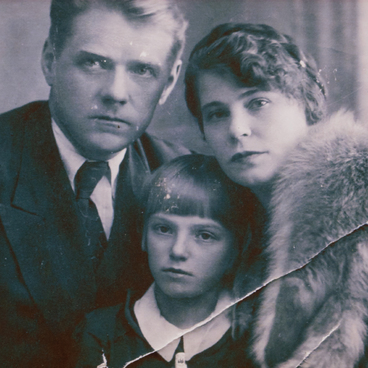The photograph from the museum collection depicts the newlyweds. The picture was taken in the late 19th — early 20th century. The bride is wearing a long white dress; her head is decorated with a wreath of flowers. That kind of dress appeared in the peasant environment during the spread of urban wedding fashion. Previously, it was a village custom to get married in a ‘suit’ — a festive skirt and jacket. The photo shows the Sokolov family, new settlers of the Yenisei province, who came from the Tambov province at the beginning of the 20th century.
The bride and groom are very young by modern standards. The fact is that before the revolution, it was customary to get married quite early: men got married at 18-25 years old, and women — at 16-19 years old. After the wedding, a girl moved to her husband’s house. Families at that time were large, and children rarely lived separately from their parents. As a rule, it was customary to marry on an ‘equal footing’, that is, marriages were concluded mainly by people belonging to the same social stratum and having equal incomes. For example, the son of a merchant married a merchant’s daughter or the daughter of a wealthy citizen, and a peasant — a peasant woman.
The parents of the young often did not approve of marriages that were not ‘equal’, and in that case, the groom took the bride away. In this case, the girl lost her dowry. Everything she had prepared — towels, bedding, clothes — remained at her parents' house. Also, a girl who got married by ‘taking away’ was deprived of a wedding feast — the main part of the festivities.
Depending on the social status or financial situation of the future spouses, the wedding was celebrated in different ways. The rich could afford a lavish table, while the poorer ones had a modest meal. But regardless of what kind of wedding it was — a merchant’s, petty-bourgeois, or peasant — it was arranged according to a strictly established order. First, matchmaking happened, followed by striking hands on a deal or agreement, then betrothal and parental blessing, and then a hen party ‘devichnik’ and a visit to the bath-house (its male analog was called ‘goschenie’), a wedding procession, a wedding ceremony and a reception.
Before the revolution of 1917, only a wedding ceremony performed in a church was recognized. Later, the relationship began to be registered with a civil act, which was signed in the village councils.
The bride and groom are very young by modern standards. The fact is that before the revolution, it was customary to get married quite early: men got married at 18-25 years old, and women — at 16-19 years old. After the wedding, a girl moved to her husband’s house. Families at that time were large, and children rarely lived separately from their parents. As a rule, it was customary to marry on an ‘equal footing’, that is, marriages were concluded mainly by people belonging to the same social stratum and having equal incomes. For example, the son of a merchant married a merchant’s daughter or the daughter of a wealthy citizen, and a peasant — a peasant woman.
The parents of the young often did not approve of marriages that were not ‘equal’, and in that case, the groom took the bride away. In this case, the girl lost her dowry. Everything she had prepared — towels, bedding, clothes — remained at her parents' house. Also, a girl who got married by ‘taking away’ was deprived of a wedding feast — the main part of the festivities.
Depending on the social status or financial situation of the future spouses, the wedding was celebrated in different ways. The rich could afford a lavish table, while the poorer ones had a modest meal. But regardless of what kind of wedding it was — a merchant’s, petty-bourgeois, or peasant — it was arranged according to a strictly established order. First, matchmaking happened, followed by striking hands on a deal or agreement, then betrothal and parental blessing, and then a hen party ‘devichnik’ and a visit to the bath-house (its male analog was called ‘goschenie’), a wedding procession, a wedding ceremony and a reception.
Before the revolution of 1917, only a wedding ceremony performed in a church was recognized. Later, the relationship began to be registered with a civil act, which was signed in the village councils.



